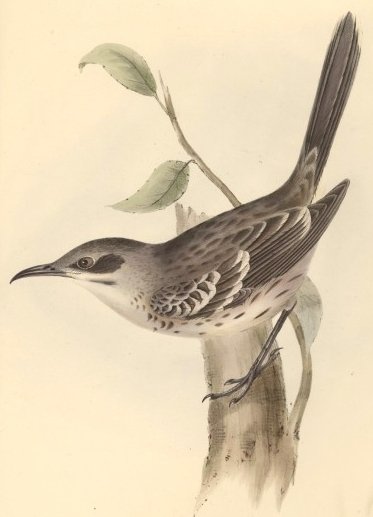
Tradeoffs in behavior, and plasticity
We assume natural selection has shaped birds to avoid predators. Noticing predators, reacting to them perhaps with an alarm call, and escaping them, as well as other behaviors, keep the bird alive and thus allow it to reproduce. We would expect, then, that natural selection favors birds that are good at these things.
But we often assume too much when it comes to natural selection. Just because selection could work on a trait does not mean that it did work on the trait. There is a tradeoff between being genetically programmed to be good at something and being flexible. Predation avoidance is a costly behavior, but important. But this behavior competes with other costly behaviors that are also important, such as finding food, nesting, and finding mates. So, if we think about bird evolution just a bit harder, we might actually expect that natural selection would not automate predator avoidance, but rather, predator avoidance, feeding behavior, nesting behavior, and mating behavior might all be somewhat variable, so that under certain circumstances an individual bird might give more attention to one thing and less attention to another thing. This allows a bird (or a pair of birds) to exploit variation in prevailing conditions. Where predators are rare, turning more attention to feeding might produce a Darwinian benefit, for example.
To paraphrase Walter Brooke playing Mr. McGuire, in his conversation with Dustin Hoffman’s character Ben in The Graduate, “Just one word … are you listening? … Plasticity. Its a great future. Enough said.”
Indeed, we might actually expect natural selection to favor plasticity in behaviors. Plasticity means, essentially, that the nature and amount of a particular behavior can vary between individuals depending on either developmental context or habitat. One of the likely outcomes of a behavior being plastic is that it emerges in an individual depending on conditions, either developmentally or experientially over time, or more immediately. Ignore plasticity in behavior at your scientific peril. Many of the great debates over human behavior, those related to things such as race or gender, are muddled and messy because plasticity is ignored. Plasticity in humans is probably modulated primarily through experience and enculturation. Plastic behaviors are not automatically unrelated to natural selection, but the way those behaviors vary across individuals or across groups may not be best explained by underlying genetic differences. Most likely, all individuals of a given species have very similar genes guiding very similar developmental processes, but produce different results because the plasticity itself is selected for.
And, likely, this sort of thing is most likely found, and most likely complex and important, in organisms that have that very costly but important physical adaptation known as brains.
Invasion of the birdie snatchers
We know that animals can essentially lose their predator avoidance behaviors. The most famous example of this is probably the Galapagos Islands. In fact, let’s take a moment to look at that particular example because most people have it wrong.
You will see often repeated that the Galapagos are unique in the lack of fear of humans exhibited by the animal inhabitants. You will also learn from such memish sources that this is because of a lack of significant lack of local predators. You’ll also learn that Darwin was struck by this fact when he visited the Galapagos.
This common conception is, however, very inaccurate.
First, Darwin wrote quite a bit about lack of fear in various animals, but he did so initially in the context of the Falklands. As I’ve noted elsewhere, it was really Darwin’s experiences on the Falklands that first congealed many of his evolutionary insights. The Galapagos came later, and were very important, but by the time he had gotten there he had already made and noted a number of evolution-inspiring observations. This includes the tameness of some animals on the Falklands. As he took note of this tameness, he also made two other observations. One was to simply recall that there are many instances of animal tameness, in particular among birds, elsewhere, including in the British Isles. In particular, birds that hang around with humans who don’t happen to hunt or eat them can become very tame. Presumably the humans keep away the predators. The second, related observation he made in the Falklands and probably also the Galapagos, was that animals, in particular birds, can be very specific in their tameness. Some animals are observed to be very wary of some possible predators, but ignore others that are, in a particular context, not predators though they could be.
My research in the Congo supports this idea. I spent a lot of time with Efe Pygmy hunters in the deep forest, and I spent a certain amount of time either entirely alone or with only one other researcher, this or that American. During the former periods, we certainly came across animals, but rarely. Part of that research was to document human avoidance by ground mammals, and that was stark and apparent. But in the absence of Efe Pygmy hunters, we ran into ground mammals much more frequently, and not because we were doing a better job of sneaking around. We simply were not perceived, I think, as a danger.
Darwin made a mistake that he could have avoided. He thought that the loss of fear of predators, or even of specific predators, required many generations of time, in order for the predator fear or avoidance to be bred out of the population. His assumption, coupled to his observations, was important because this is one of the intellectual experiences he had that solidified his thinking about, and resolve to explore, evolution. But even his own observations should have told him that plasticity was paramount, and that it did not take that long for a population to change in its attitude about predators.
Being bad at avoiding predators takes one generation
And now, lets look at a new research project that elucidates Darwin’s observations, and in part, actually proves that one thing he said to be wrong(ish).
The paper is in Natrure Scientific Reports. “Rapid loss of antipredatory behaviour in captive-bred birds is linked to current avian invasions,” by Martina Carette and José Tella.
The bottom line is this. If you capture birds (to make them pets) from the wild, and they get out, they are good at avoiding predators. If you take birds that have been pets for generations and they get out, they are bad at avoiding predators. But, if you capture wild birds (to make them pets) then breed them through one generation and they get out, they are bad at avoiding predators.
From the abstract:
Despite the importance of behaviour in conservation biology, there have been few studies that address behaviour in areas such as invasion ecology. There is an urgent need to identify specific traits that facilitate the establishment and spread of alien species to prevent biological invasions and their impact on biodiversity. Changes in antipredatory behaviour in captivity have been proposed to explain the higher invasiveness of wild-caught exotic species. We experimentally tested this hypothesis by assessing the response of wild-caught and captive-bred cage birds facing an approaching predator and their ability to escape from human capture, using species available in the Spanish pet market. Results showed the loss of antipredatory responses and escape abilities in captive-bred birds compared with wild-caught ones. An intraspecific comparison between wild-caught and the first generation of captive-bred birds pointed to a rapid behavioural loss in captivity (individual lifetime) rather than to differences among species (evolutionary exposure). In the context of current avian invasions, the proportion of individuals showing antipredatory responses within a species was positively related to the likelihood of the species being found escaped and breeding in the wild. These results offer a link between behaviour, fitness, and the invasion syndrome in birds.
The study used many species, good sample sizes, and is statistically convincing. The study does combine results across a wide range of species (parrot-like birds and passerines), so I suspect a more detailed examination comparing species will be interesting.
The study was motivated mainly by the need to learn more about the dynamics of invasive species, but I found the results to be more broadly interesting and important, demonstrating the way evolution in a brainy vertebrate seems to have shaped behavior.
How do the birds that were not kept out of the predator game for a generation or more come up with the predator-avoidance behavior? Do they learn it from other birds, and if so, what kind of learning is it? (I suspect social learning, well documented in birds.) Clearly, more research is needed!

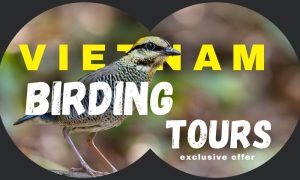


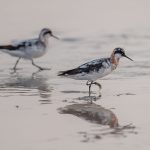
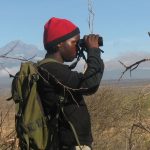
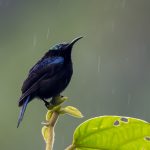

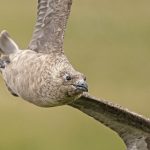
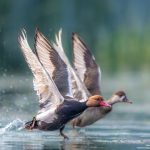
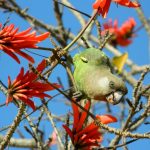
Leave a Comment